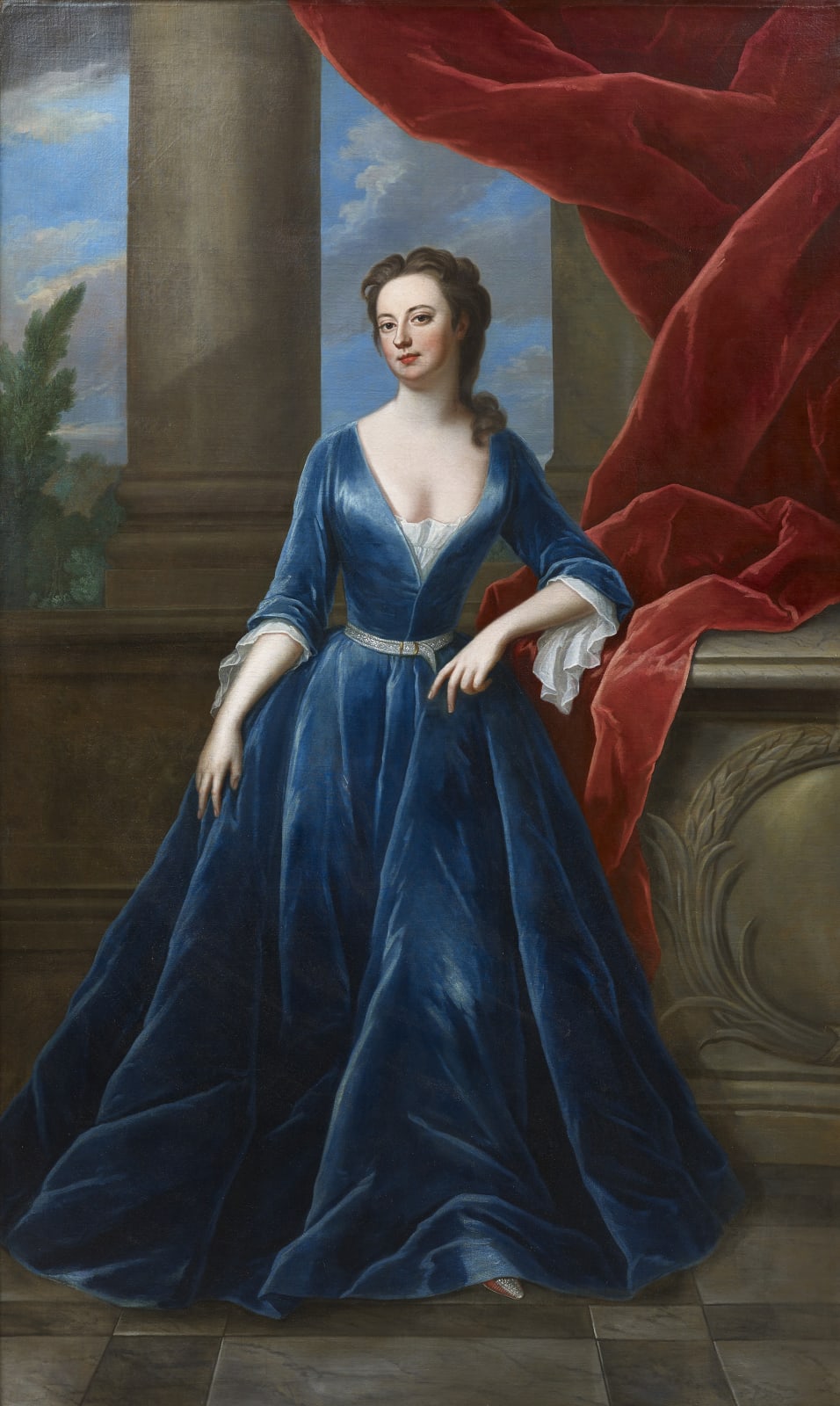
Adriana Verelst
Sarah was close with Princess Anne, later Queen of Great Britain, and acted as the Princess’s agent after her father, James II, was deposed during the Glorious Revolution. The Duchess continued to communicate Anne’s interests during the reigns of both William III and Mary II. The political leverage that came from this relationship also benefited the Duchess’s husband John Churchill, Duke of Marlborough who, when Anne became Queen in 1702, was promoted to the head of government along with Sidney Godolphin, the 1st earl of Godolphin. Towards the end of Anne’s life however their friendship fractured, and so severe was their fallout that the Duchess and Duke of Marlborough were forced into exile on the Continent. They did not return until after Anne’s death in August, 1714.
As well as holding influential roles in court as mistress of the robes, keeper of the Privy Purse, and, ranger of Windsor Park, the Duchess was an immensely high-earning woman for her day. Her total salary from appointments was £6000 p.a. and, as with all her income and property, Sarah managed these assets independently from her husband through trustees. Sarah’s success was immortalised in Blenheim Palace, which, under her watchful eye, was constructed between 1705 and 1722 and is regarded as one of the finest examples of English Baroque architecture.
This portrait was almost certainly painted prior to the death of Sarah’s husband in 1722 and thus before the portrait of Sarah by Verelst at Blenheim, in which she is shown seated in mourning attire.
Adriana was the daughter of Dutch painter Herman Verelst (1641-1690) and niece of the more well-known Stuart court painter Simon Verelst (1644-1710). Adriana moved to England at the age of three with her father following the siege of Vienna by the Ottoman Empire and, following her father’s success, later became his student. Well-connected and highly skilled, Adriana established herself quickly and her earliest recorded painting dates to c. 1695, painted when Adriana was fourteen, and depicts William Wentworth, 2nd Earl of Strafford (1626-1695) [Welbeck Abbey]. Adriana painted several works for Welbeck as well as thirteen portraits for James Brydges, 1st Duke of Chandos (1673-1744), most probably for Cannons House which was completed in 1724.
As well as a talented painter, Adriana was also well educated and spoke a number of different languages which no doubt helped her secure patronage. According to an anecdote published in 1730 Adriana was once at Drury Lane theatre when she heard some gentlemen nearby praising her in German, she then turned to them and began conversing in the same language before the gentleman switched to Latin, Adriana proceeded in Latin and the gentlemen were so impressed that they commissioned their portraits, and through their connections Adriana supposedly built up a list of wealthy clientele.
Although there is no definitive catalogue of works by Adriana, an unpublished manuscript in the National Portrait Gallery library compiled by an R.W. Goulding in c.1912 lists around forty works in private collections. This brief catalogue suggests Adriana worked in various sizes and mediums ranging from small oil on copper portraits to large full-lengths, and aptly painted copies of existing works as well as one-off commissions. We can therefore gauge that Adriana was a highly diverse and talented painter, seen especially in the works on copper – traditionally a Dutch enterprise, as well as commercially shrewd.
Stylistically, Adriana's work follows the English eighteenth century tradition of portrait painting, epitomized by the likes of Kneller and Dahl and therefor has led to much confusion over authorship. On closer inspection however one notices how the highlighting on the draperies in Adriana's portraits are far more pronounced and brighter in tone, no doubt an influence from her uncle Simon Verelst, as seen in his portrait of Mary of Modena c.1675 [Philip Mould Ltd].
Provenance
Gennaro Maione (1894-1965) and Gertrude A. Maione (née Jennings) (b.1890) thence by descent; Patricia Gertrude Maione (1921-2001), by whom sold; Christie’s, London, 10 December 1965, lot 72 (as by ‘Kneller’); Bought from above by ‘Mr Box’ (90 guineas); Private collection, UK